
Review on 🔌 UbiGear Network/Phone Cable Tester + RJ11/RJ12/RJ22/RJ45 Crimp Crimper +100 RJ45 CAT5 CAT5e Connector Plug Network Tool Kits (Crimper315) – Premium Networking Equipment for Efficient Cable Testing and Crimping by Gavin Ghram

Good crimping tool, useless wire stripper
I bought a UbiGear Crimp 315. I had never crimped Cat5e before so I had to learn. Luckily I have a brother with experience. The yellow wire stripper is useless. When I used it to strip Cat5e cables, it cut 1 or more wires under the outer shield. So I used a small pair of scissors to cut from the end to the length I wanted, then around the cable to get to the wires underneath. I made the mistake of stripping individual wires before inserting them into the terminal; not necessarily. However, the stripper did a very poor job anyway, either stripping one side of the insulation or cutting the wire. I threw away the stripper. The crimping tool pierces the wires very well and makes a good connection. Once I figured out how to do it, it became pretty easy and every connection worked fine. The tester allowed me to separate the blocks and place one on the second floor and the base at the other end on the first floor. The clips are not high quality but they are great for my needs. I ran the first two wires from the 2nd floor to the attic, down to the basement and back to the first floor. I put clamps on all 4 ends and used a tester to confirm. I connected to my cable box, roku box and my Sony Blu-ray player. All connections have been tested properly and now the wifi connection doesn't drop anymore. I will add a switch to one of the wires and run additional Cat5e wires to the other downstairs rooms. How I made the crimp wires - Route the wires as needed around your house - Strip the outer insulation about a half inch from the end of the wire. Cat5e exposes 4 twisted pairs of wires. Straighten individual wire pairs and align according to T568B or T568A (see enclosed instructions). Whatever you use, always use it over your network. Line up the pairs of aligned wires, you may need to cut them so they are the same length. - Once you lined up the wires to the standard, use pliers (or some sort of soft clamp) to flatten them out and hold them in place. - Insert the wires into the end of the bracket with the tab down. You should be able to see the ends of the wires on the other end of the clip. You can look at the edges to see the outside 2 wires. It is very important that you get them ALL the way to the end of the clamp. Insert the clip, tongue up, into the center (8P) of the crimping tool, being careful not to pull the wires out. Squeeze the crimping tool and the chrome-plated latch lifts to push the gold tabs into each wire, piercing them and making a connection. Press the tab on the terminal and remove it from the crimping tool. Do the other end of the wire the same way. Separate the 2 parts of the tester, place the smaller one on one end of the new Cat5e clip. large tester and plug in the other end of the Cat5e. Move the slide switch to the on or s (slow) position. "G" lights up on only one of the testers (OK). Each tester glows red for each of the numbers 1-8 (4 pairs). If an indicator is missing, the crimp didn't work. (I watched about 6 clips before it got right. The rest was fine on the first try.) Hope this helps someone else.
- Perfect for outdoor activities
- Good but not the best
New products
Comments (0)
Top products in 🔌 Electrical Tools & Hardware
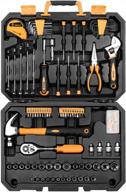
Complete Home Repair & Auto Toolkit: DEKOPRO 128 Piece Hand Tool Set With Handy Storage Case

35 Review
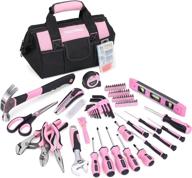
Complete 220-Piece Pink Tool Set For Women – Ideal For All Home Repairs And DIY Projects

41 Review
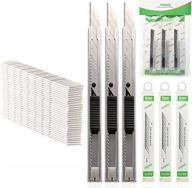
3-Pack FOSHIO Utility Knife Retractable With 30 Degree Snap Off Blade For Vinyl, Paper & Craft Cutting

39 Review
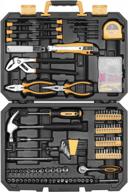
DEKO 196-Piece General Household Hand Tool Kit - Includes Rip Claw Hammer, Lineman'S Pliers, Measuring Tape, And Plastic Toolbox Storage Case

32 Review
Another interesting products

💡 Electronic FL Ballast ICN-4P32-N (Formerly ICN-4P32-SC) for 3-4 F32T8 F40T8 F17T8 Lamps, 120V/277V Compatibility

5 Review
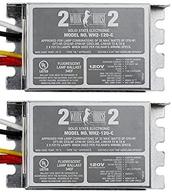
Fulham WorkHorse WH2-120-C Adaptable Ballast - 2 Pack

3 Review
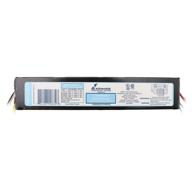
💡 High-Quality Advance ICN-4P32-SC Electronic Fluorescent Ballast: Ideal for 4 Lamps, 32W T8, 120/277V

3 Review

⚡️ Sunpark LC-12014T (1) FC12T9 32W Circline (1) 2D 38W (1) FC16T9 40W Circline (1) FC9T9 30W Circline Lamp Compact Electronic Fluorescent Ballast with Circline Lamp Plug 120V

7 Review

